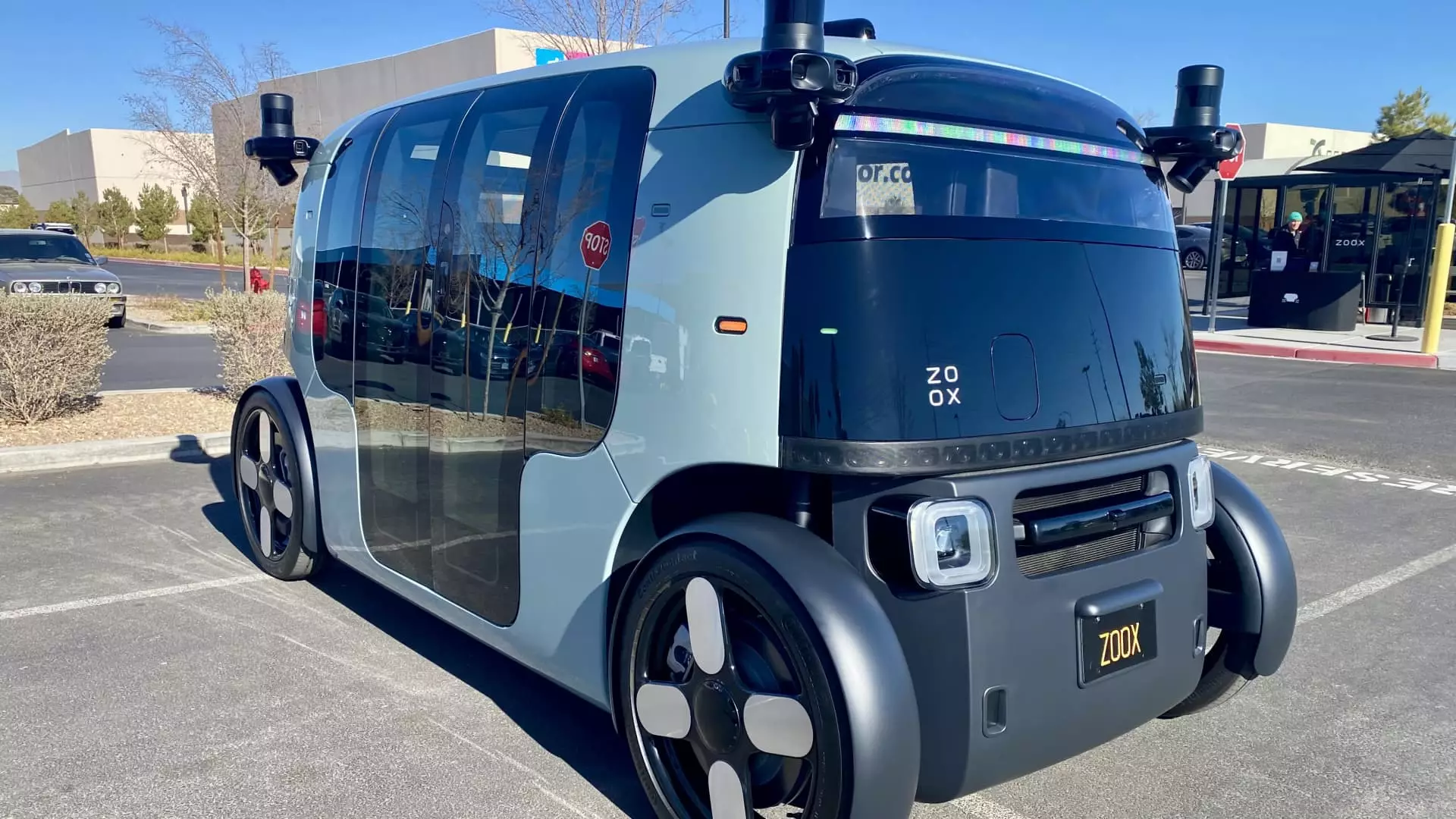In 2023, Zoox, Amazon’s autonomous vehicle unit, stands at a crossroads, eagerly poised to expand its operations and take decisive steps towards the commercialization of its robotaxi service. As the competition within the self-driving sector intensifies, the company is keen to attract public interest while navigating the skepticism surrounding the viability of autonomous vehicles. With ambitious plans and strategic goals set by its co-founder and Chief Technology Officer, Jesse Levinson, Zoox is focused on launching rides to the public in Las Vegas and expanding its fleet significantly. However, challenges loom as the autonomous vehicle industry faces regulatory hurdles, investor hesitance, and comparisons to rivals like Waymo.
Zoox is not merely looking to increase its presence in the existing markets but aims to venture into multiple cities across the United States. The Las Vegas metro area is deemed the first commercial market, with the upcoming “Early Rider Program” slated to commence shortly. The company holds aspirations for other significant urban centers such as Miami and Austin, acting on Levinson’s vision of ubiquitous robotaxi services in major U.S. cities by the end of the decade.
This ambitious trajectory, however, raises questions about the company’s readiness for rapid scaling. Zoox’s autonomous vehicles—distinctive in their design without traditional driving controls—promise a unique riding experience, yet their performance in real-world conditions continues to be scrutinized. Technologies still untested on a larger scale can pose risks, especially when integrating with human-driven traffic—a reality Zoox must confront head-on.
As Zoox embarks on this journey, it does so against an evolving competitive landscape. Major automakers like General Motors, Ford, and Volkswagen have faltered in their autonomous vehicle pursuits, leading to the dissolution of several self-driving units. This has created a void that Zoox might capitalize on—but its path forward is anything but guaranteed. The success of Waymo, for instance, serves as an industry benchmark, with the company having expanded its fleet and offerings to include unsupervised rides since 2019. Zoox, in contrast, will need to reconcile its innovation with the hard realities of market dynamics.
While some industry experts herald Zoox’s robotaxi as “interesting” due to its size and innovative design, detractors point out that the technology must function optimally in unpredictable conditions. A recent test drive in Las Vegas did demonstrate the vehicle’s proficiency in handling common urban scenarios; however, it also revealed some cautious tendencies in navigating complex traffic situations. Critics argue that the balance struck between too cautious and overly assertive driving is delicate and crucial for success.
Investment strategies also come into play as Zoox navigates this complicated terrain. Amazon’s decision to acquire Zoox for $1.3 billion reflects a long-term vision for autonomous transportation, yet transparency around financial backing is scarce. Without a clear understanding of how investments are distributed within Zoox, stakeholders remain concerned about scalability and sustainability.
Industry analysts emphasize the importance of developing a robust business model that ensures profitability while balancing operational costs. The robotaxi sector has seen inflated expectations about operational efficiency and cost-effectiveness thwarted by financial realities as companies invest more than anticipated without returns to show for it. Levinsion’s statement regarding conservative scaling reflects an awareness of the complexities involved in introducing autonomous vehicles on public roads.
Safety remains paramount, particularly in light of recent incidents involving self-driving vehicles. Zoox’s decision to prioritize a gradual rollout, underpinned by extensive safety testing, suggests a commitment to responsible innovation. Ensuring that these vehicles can effectively interact with human drivers is a pressing concern that cannot be taken lightly. The regulatory environment surrounding autonomous vehicles is still evolving, and any misstep could hinder the public’s acceptance of robotaxi services.
The path towards achieving a safe, effective, and reliable autonomous vehicle operation is rugged and fraught with uncertainties surrounding regulations and public opinion. Other industry players, particularly Tesla, have faced setbacks regarding their autonomous pursuits, highlighting the unpredictability intrinsic to this sector.
Zoox’s aspirations to become a frontrunner in the autonomous vehicle industry rely heavily on innovative technology, strategic expansion, and a commitment to safety. Despite existing challenges including investor skepticism and competitive rivals such as Waymo, there remains promise in Zoox’s unique approach to robotaxi services. As the landscape continues to evolve, it is vital for Zoox to remain focused on developing its capabilities while addressing the inherent difficulties of commercializing autonomous transportation. With each challenge faced, Zoox could find its footing—aiming to transform public perception and redefine urban mobility in the years to come.

